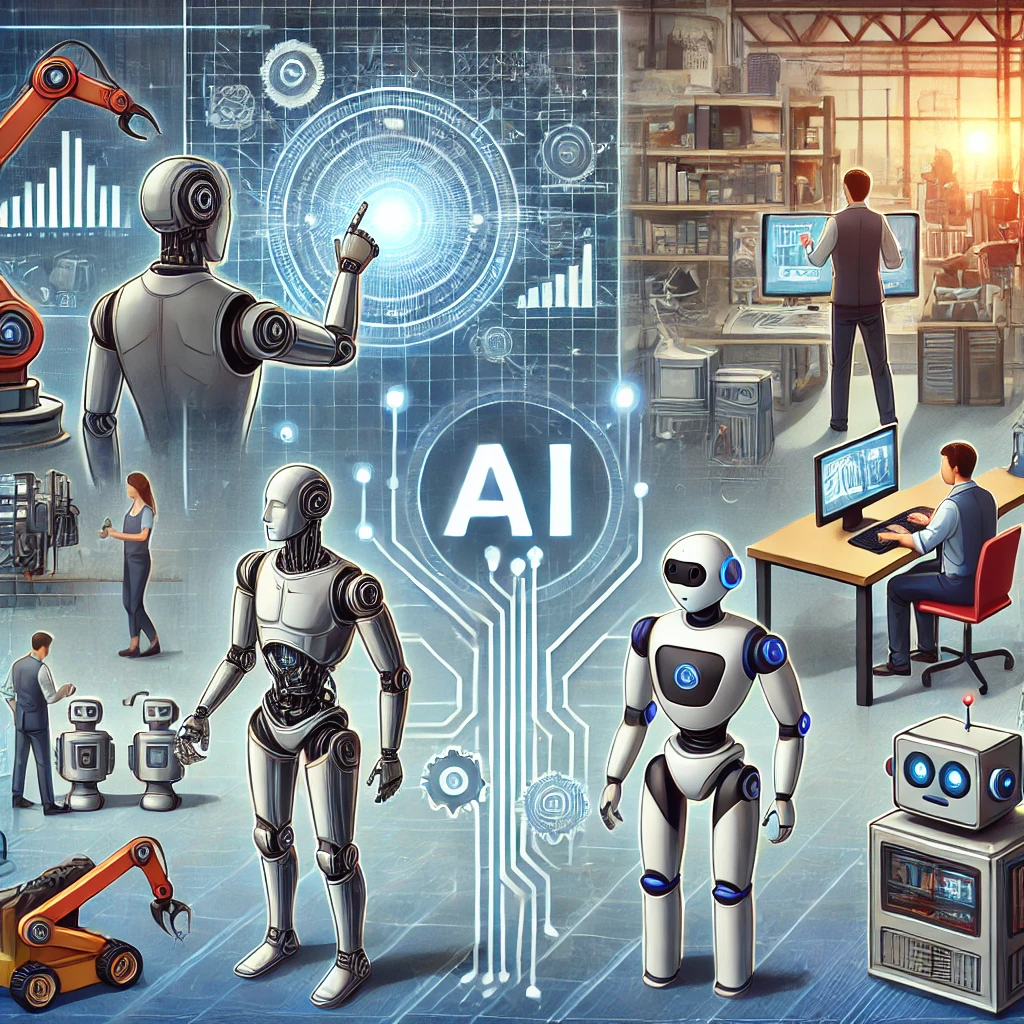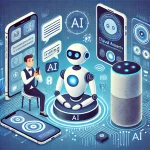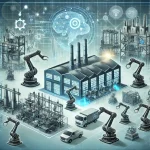The convergence of robotics and artificial intelligence (AI) represents one of the most exciting advancements in modern technology. Together, these fields are pushing the boundaries of what machines can do, enabling robots to learn, adapt, and interact with humans in increasingly sophisticated ways. This article delves into how robots learn through AI, the various methods used to train them, and how they are designed to interact with humans in real-world environments.
How Robots Learn: The Role of AI in Robotics
At the heart of robotic learning is AI, which provides the computational models and algorithms that enable robots to process data, recognize patterns, and make decisions. Unlike traditional robots that operate based on pre-programmed instructions, AI-powered robots can learn from their experiences and adapt to new situations. This ability to learn and evolve is what makes AI so transformative for robotics.
Machine Learning and Deep Learning
Machine learning, a subset of AI, is crucial for teaching robots to perform tasks without explicit programming for every possible scenario. Through machine learning, robots are exposed to large datasets from which they can learn patterns and make predictions. This is particularly useful in complex environments where pre-programming every action would be impractical.
Deep learning, a more advanced form of machine learning, uses neural networks with multiple layers to analyze data at different levels of abstraction. For instance, a robot equipped with deep learning capabilities can process visual data to recognize objects, understand spatial relationships, and navigate its environment. This is similar to how humans learn by processing sensory inputs and building a mental model of the world.
Reinforcement Learning
Reinforcement learning is another key method through which robots learn. In this approach, robots learn by trial and error, receiving rewards or penalties based on the outcomes of their actions. Over time, the robot optimizes its behavior to maximize positive outcomes. This method is particularly effective for teaching robots to perform tasks in dynamic environments, such as playing games, driving vehicles, or navigating through obstacles.
One famous example of reinforcement learning in robotics is the development of autonomous vehicles. These vehicles learn to navigate roads, avoid obstacles, and follow traffic rules through countless hours of simulated and real-world driving, continually improving their performance based on feedback from their environment.
Simulated Environments for Learning
Before deploying robots in the real world, they often undergo extensive training in simulated environments. These environments mimic real-world conditions and allow robots to practice tasks in a controlled, risk-free setting. Simulation helps robots learn faster and more efficiently, as they can be exposed to a wider range of scenarios than would be possible in the real world alone.
Simulation is particularly useful in industries where safety is a concern, such as healthcare and manufacturing. For example, surgical robots can be trained in simulated operating rooms, where they learn to perform complex procedures without risking patient safety. Similarly, industrial robots can be trained to assemble products in a virtual factory before being deployed on the production line.
Human-Robot Interaction (HRI)
As robots become more integrated into everyday life, the study of human-robot interaction (HRI) has become increasingly important. HRI focuses on how robots can effectively communicate, collaborate, and coexist with humans. This field combines insights from psychology, sociology, and computer science to design robots that can interact with people in intuitive and socially acceptable ways.
Natural Language Processing (NLP) and Communication
One of the most critical aspects of HRI is communication. For robots to interact with humans effectively, they must understand and respond to natural language. Natural language processing (NLP), a branch of AI, enables robots to interpret spoken or written language, allowing them to engage in conversations with humans.
NLP allows robots to understand context, recognize speech patterns, and respond appropriately. For instance, a service robot in a hotel might use NLP to understand a guest’s request for extra towels and then relay that request to the housekeeping staff. As NLP technology advances, robots are becoming more capable of handling complex conversations and understanding nuanced human emotions.
Social Robots and Emotional Intelligence
Social robots are a specialized type of robot designed to interact with humans on a social level. These robots are equipped with emotional intelligence, allowing them to recognize and respond to human emotions. Through AI algorithms, social robots can analyze facial expressions, tone of voice, and body language to gauge a person’s emotional state and respond in a way that is perceived as empathetic or supportive.
Social robots are increasingly used in settings such as elder care, where they provide companionship and support to individuals who may be socially isolated. By engaging in conversations, playing games, or simply being present, these robots can improve the quality of life for elderly individuals, offering emotional and psychological benefits.
Collaborative Robots (Cobots)
Collaborative robots, or cobots, are designed to work alongside humans in shared environments. Unlike traditional industrial robots, which are often isolated for safety reasons, cobots are built with safety features that allow them to operate in close proximity to people. They are typically used in manufacturing settings, where they assist workers with tasks such as assembly, packing, and quality control.
Cobots are programmed to understand and adapt to human actions, making them ideal for tasks that require flexibility and collaboration. For example, a cobot might work alongside a human worker on an assembly line, handing over tools or materials as needed. This collaboration not only increases productivity but also reduces the physical strain on human workers.
Challenges and Ethical Considerations
While the integration of AI and robotics offers tremendous potential, it also raises several challenges and ethical considerations. One of the main concerns is the potential for job displacement, as robots become capable of performing tasks traditionally done by humans. This has led to discussions about the future of work and the need for reskilling programs to prepare the workforce for an AI-driven economy.
Another challenge is ensuring that robots interact with humans in a way that is ethical and respectful. This includes addressing issues such as privacy, consent, and the potential for bias in AI algorithms. As robots become more autonomous, it is essential to establish guidelines and regulations that ensure their behavior aligns with societal values.
Conclusion
The fusion of robotics and AI is driving significant advancements in how robots learn and interact with humans. Through machine learning, deep learning, and reinforcement learning, robots are becoming increasingly capable of performing complex tasks and adapting to new environments. As human-robot interaction continues to evolve, we can expect to see robots playing a more prominent role in our daily lives, enhancing productivity, improving safety, and providing companionship. However, it is crucial to address the challenges and ethical considerations that accompany these advancements to ensure that the integration of robots into society is both beneficial and responsible.



Sounds cool, robots getting smarter. But what about jobs? And what if they get out of control? We need to be careful about these ethical issues before we go full-on robot takeover.
Lol else we’ll end up in terminator🤣🤣
Cool stuff, but scary! 🤖💫 Ethics matter—don’t forget that part.
Huh, im hope, what SkyNet won’t take over the world! 🤣🤣
Haha she gotta make it over the doorstep first tho lol 😂
lol robots tryna learn n chat? I wish luck!😂